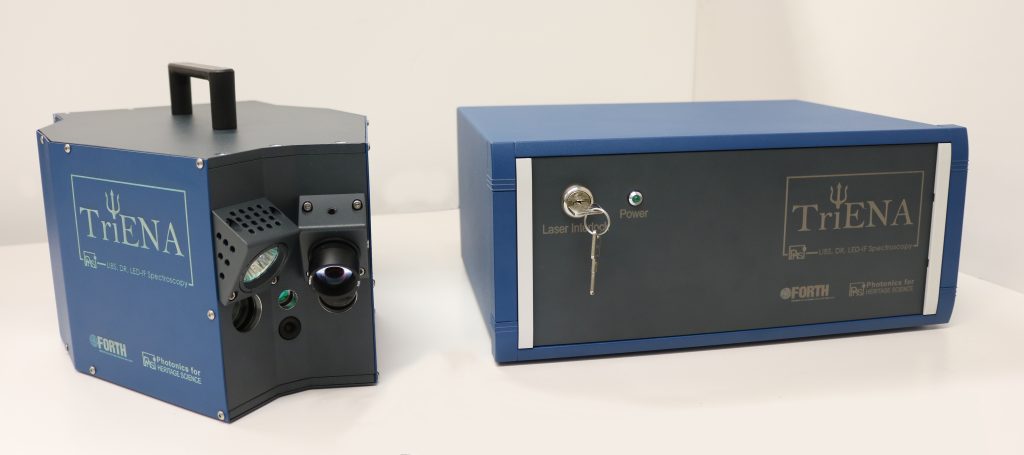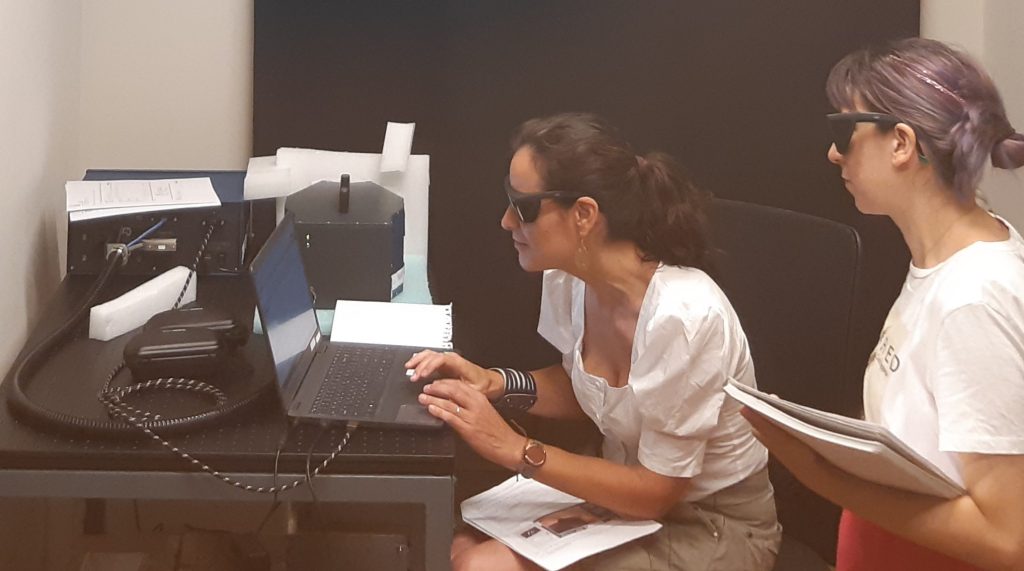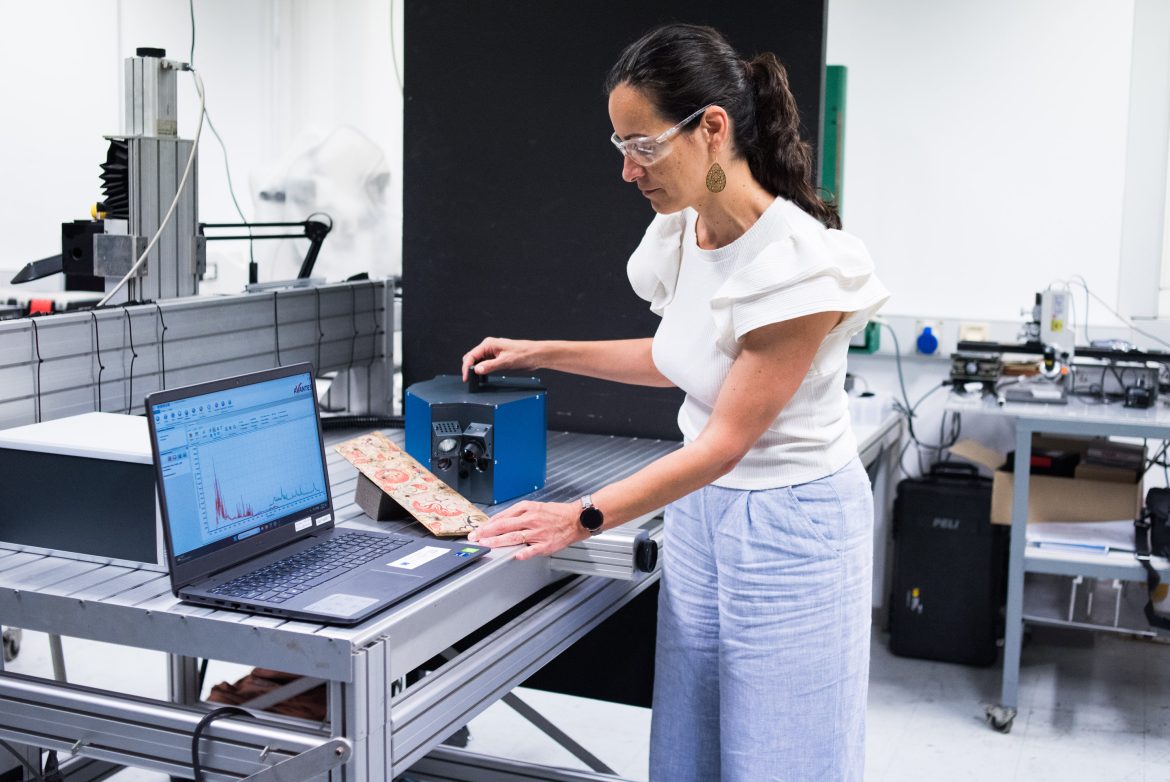TriENA, Laser spectroscopy
TriENA hybrid system combines 3 spectroscopic analytical techniques (LIBS, LED-IF, and DR) in 1 portable device and is a deliverable of the CALLOS -project. It has been developed at the Institute of Electronic Structure and Laser of FORTH by the Photonics for Heritage Science Researchers, in collaboration with the conservators of EACA to meet the analytical challenges commonly encountered on Athenian monuments.
TriENA combines three spectroscopic techniques: Laser-Induced Breakdown Spectroscopy (LIBS), Diffuse Reflectance Spectroscopy (DR), and LED-Induced Fluorescence (LED-IF), leading to an integrated characterization of the material under examination ‘in-situ’ with no sample removal or preparation restrictions. Moreover, the rapid data acquisition and the user-friendly software increase the system’s applicability in archaeometry and art conservation.

Laser-Induced Breakdown Spectroscopy
LIBS offers qualitative and semi-quantitative multi-elemental analysis and the ability to perform stratigraphic analysis on a multi-layered object. A compact Nd:YAG laser (1064 nm, τΡ= 10 ns) is focused by means of a lens on the surface of the object generating a micro-plasma, whose emission is transmitted via a bifurcated optical fiber into a dual spectrometer unit (Avaspec-2048-2-USB2, Avantes) (spectral range: 200 – 660 nm, resolution: 0.2 – 0.3 nm) and the analytical information is acquired within seconds.
Diffuse Reflectance Spectroscopy (DR), and LED-Induced Fluorescence (LED-IF)
DR and LED-IF techniques reveal information about the molecular composition of a material; DR is based on the absorption of light from the material and LED-IF is based on the fluorescence induced from a LED source. Both techniques are non-destructive, making them extremely attractive for the analysis of objects in cultural heritage and archaeology. A halogen tungsten lamp is used for the DR measurements, while for the LED-IF measurements, a LED source (375, 438 or 632 nm) excites the material. In order to achieve a broader spectral coverage, the signal from the DR and LED-IF is recorded via a low-resolution spectrometer (Avaspec-2048L-USB2, Avantes) (spectral range: 200 – 1100 nm, resolution ~ 2.5 nm).
A miniature CCD camera offers a magnified view of the object surface during analysis and permits accurate aiming of the laser beam with the aid of a cross-hair indicator superimposed on the image. All the light sources along with the necessary optics and visualization camera are integrated in a lightweight and compact optical probe head.


The Project CALLOS «Conservation of Athens antiquities with Laser and Lidar Technologies Open to Science and public» (CALLOS) operates in the frame of the Special Action “OPEN INNOVATION IN CULTURE” and is co-funded by the European Regional Development Fund (ERDF) and national resources through the Operational Program “Competitiveness, Entrepreneurship & Innovation” (NSRF -EPAnEK) (project code MIS- 5056208).


